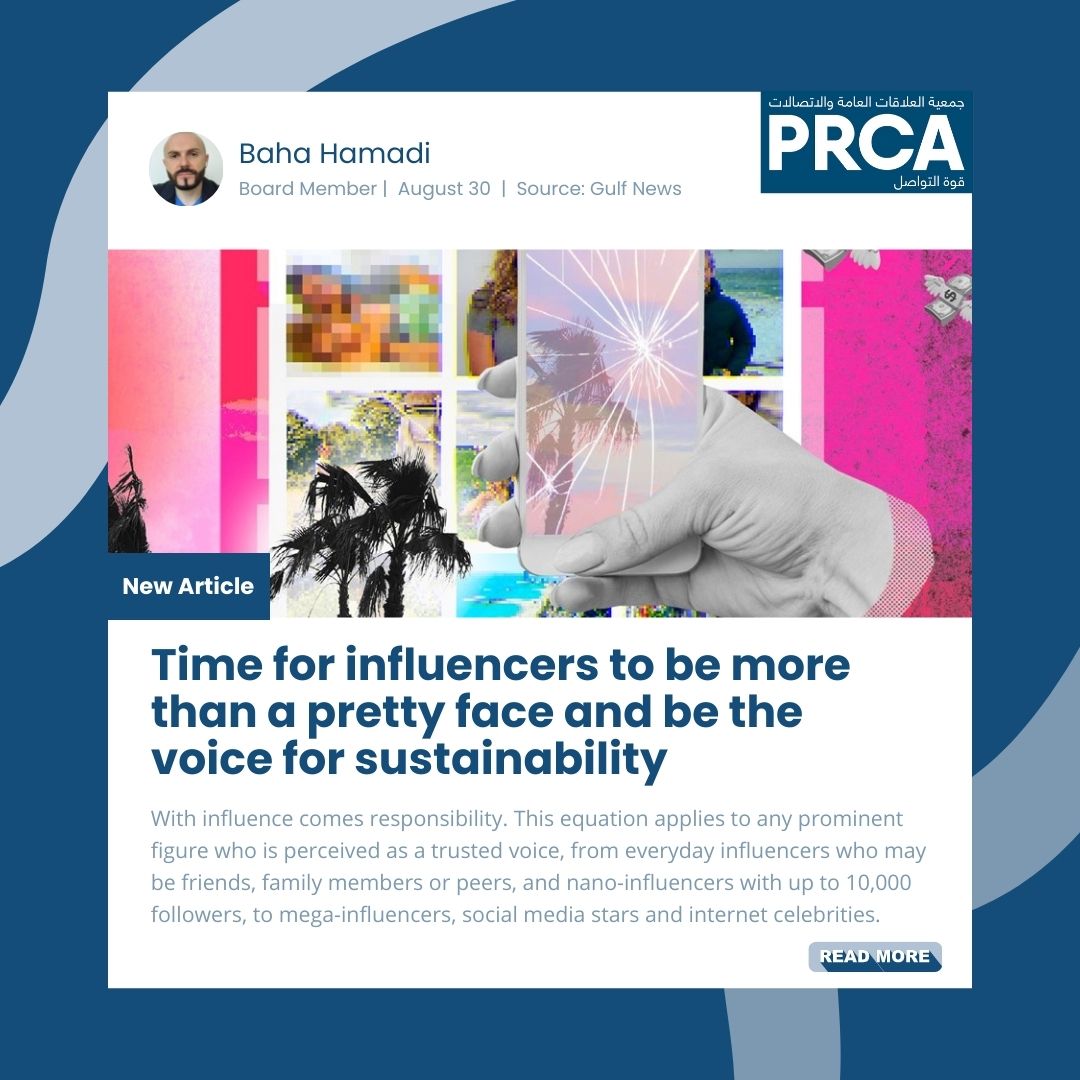Time for influencers to be more than a pretty face and be the voice for sustainability
The meteoric rise of social media has rendered public opinion the most powerful socio-political force in the world, and the influencer is at the heart of this movement.
With influence comes responsibility. This equation applies to any prominent figure who is perceived as a trusted voice, from everyday influencers who may be friends, family members or peers, and nano-influencers with up to 10,000 followers, to mega-influencers, social media stars and internet celebrities.
Whether they rely on their attractiveness, relatability, sense of humour or expert opinion, influencers at various levels, and micro influencers in particular, collectively have the potential to sway public opinion through channelling some of their clout towards social good.
Influencers leveraging their authority for the greater good have been few and far between. Examining the profiles of a sample of influencers you follow, you will come to realise that hardly any of their content is altruistic in nature.
Influencing for environment
This year, however, influencers are expected to imbue more purpose into their messaging and lives. COP26 may have served as a wakeup call for many, not least for the social media ecosystem, urging influencers to identify and support social and environmental causes close to their hearts.
This shift to ‘sustainable influence’ will empower influencers to relay a sense of purpose to their followers while building their brands as change agents who inspire their communities online and in the real world.
But why hasn’t sustainability been absorbed yet into the mainstream influencer community? Why don’t we see many influencers authentically and consistently standing up for social and environmental justice?
‘Intellectual aesthetic’
Criticism of influencers for relying on their looks, comedy acts or memes over their intellect is commonplace, but many influencers believe that glossy, visually appealing videos and images represent the main class of content that achieves high engagement. Today, the most engaging content on Instagram is curated by the fashion and beauty sector. While we are beginning to witness thoughtful and purpose-driven social media profiles, we are yet to see a broader ‘influence with purpose’ movement on social media.
An obvious hurdle is partly the perceived ineffectiveness of intellectual and purposeful content in relation to engagement. Critics who accuse influencers of prioritising style over substance fail to make convincing arguments when urging them to pursue thought leadership, use their voices and have a sense of purpose.
Most influencers maintain that appealing aesthetics and humorous posts are some of the main content pillars that drive high engagement, and thus pay their bills.
Although difficult to prove, we predict that the business case for the ‘intellectual aesthetic’ — in which influencers discuss issues of substance in a digestible way — will become more pervasive across the influencer community, especially given the pressure on everyone to act for environmental justice and other such causes.
Influencers and sustainability
Despite a vacuum of relatable voices in the movement, influencers have been perhaps the slowest key opinion shapers to adopt a sustainability mindset.
It is time influencers caught up with the trend and started using their online presence more pervasively for the greater good. While they are not expected to fix our social and environmental problems, influencers can play a key role in mainstreaming the solutions by continually sparking conversations and applying pressure on policymakers, businesses and communities to act.
Influencing responsibly is not about making a post, creating a couple of Instagram stories or being part of a charity campaign for a month, a year or even two years. Pursuing a certain social or environmental cause is a life-long commitment and should emanate from within. No matter how small an influencer’s contribution is, the collective efforts of the influencer community in sustainability can make a big difference.
From influencers to advocates
Cause-advocacy is not just about talking. The key to effective and meaningful advocacy is a genuine drive to support a chosen cause, taking action and inspiring others to follow suit. Brands and influencers with intrinsically driven corporate social responsibility efforts appear to be genuinely caring towards their communities. Therefore, their audiences perceive them as responsible citizens.
Influencers ought to become more than just a pretty face. They have a huge opportunity to become thought leaders and creators of meaningful content, ideas and fresh thinking on critical issues facing humanity.
By tapping into their own minds rather than focusing on their looks, influencers can realise their full potential and truly become brand ambassadors, sustainability envoys and recognised spokespeople from their communities.
There is already a niche of influencers who are becoming experts and thought leaders in their fields, sharing insights and advice, and at times contributing their voices and influence to their chosen causes.
Take Jessica Kahawaty. She is a UAE-based model, philanthropist and entrepreneur. The Lebanese-Australian influencer has been modelling since she was 14, but is now one of the few using their influencer status for the public good.
She has worked with the UN to raise awareness about humanitarian causes through trips to refugee camps, and because of her philanthropic work, she is the only model to sit on the UNICEF Leadership Council—a body that seeks to improve the status of children globally.
Civil society, brands and marketers have a key role to play in expanding this class of influencers, and they can do so by working with purposeful key opinion leaders, ultimately encouraging the spread of profound and purposeful content. The end goal is to instil an activist mindset where intellect and purpose are on par with looks and comedy.




